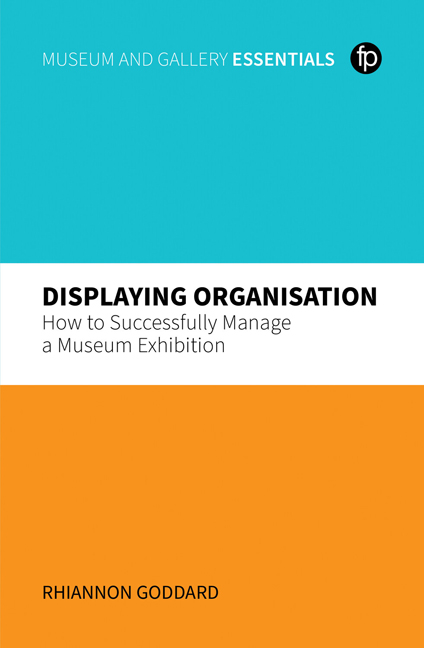Book contents
- Frontmatter
- Dedication
- Contents
- Figures, Tables, Boxes and Case Studies
- About the Author
- Acknowledgements
- Introduction
- PART 1 DEFINING THE PROJECT
- PART 2 PLANNING THE PROJECT
- PART 3 EXECUTING THE PROJECT
- PART 4 TRANSITION
- PART 5 EVALUATING THE PROJECT
- PART 6 KEY PROJECT MANAGEMENT SKILLS
- Bibliography
- Index
1 - Getting the Vision Right
Published online by Cambridge University Press: 14 October 2023
- Frontmatter
- Dedication
- Contents
- Figures, Tables, Boxes and Case Studies
- About the Author
- Acknowledgements
- Introduction
- PART 1 DEFINING THE PROJECT
- PART 2 PLANNING THE PROJECT
- PART 3 EXECUTING THE PROJECT
- PART 4 TRANSITION
- PART 5 EVALUATING THE PROJECT
- PART 6 KEY PROJECT MANAGEMENT SKILLS
- Bibliography
- Index
Summary
Introduction
Getting the outline vision and objectives of the exhibition right so that it appeals to the audience and aligns with the museum's goals is crucial, but is often overlooked as part of the exhibition process and isn't always part of a project plan. Projects run much more smoothly if time is built into the programme for this work. You will need to allocate time and resources; it doesn't necessarily need to cost a great deal, but it does need thinking time. If you skip this stage and dive straight into designing the exhibition this can lead to a confused narrative, problems in selecting objects and even being forced to change designs later in the process so as to accommodate ideas or narrative concepts that could have been planned for before you got going – adding cost, causing delays and making your life as the PM much harder. Having a really clear vision of what you want to achieve will save you time and, ultimately, make the exhibition better. Ensuring that it fulfils the museum's vision and goals is a must. So how do you go about this? This chapter proposes a number of steps for coming up with, testing and refining the exhibition idea. It includes information on how to manage the creative process and establish an outline narrative, how to consult so as to ensure that the idea works and how to analyse the ideas so as to create meaningful and actionable objectives for the project.
The creative process: coming up with the right idea
The first stage is coming up with the overall idea for the exhibition – thinking about and generating, developing and evaluating ideas. Often this stage is completed before a PM is brought on board and ends with a simple outline proposal, sometimes called a mandate, which is approved in principle for the next stage of development. This is the point where you as PM are most likely to be tasked with taking the project forward. This part of the process – generating these first creative ideas and coming up with an idea, theme or central concept for an exhibition – is covered by another book in this series, Unlocking Collections by Maria Blyzinsky.
If the idea is approved for inclusion in the museum's exhibition schedule or for further development, it is usually given to a team to develop further.
- Type
- Chapter
- Information
- Displaying OrganisationHow to Successfully Manage a Museum Exhibition, pp. 3 - 22Publisher: FacetPrint publication year: 2023

